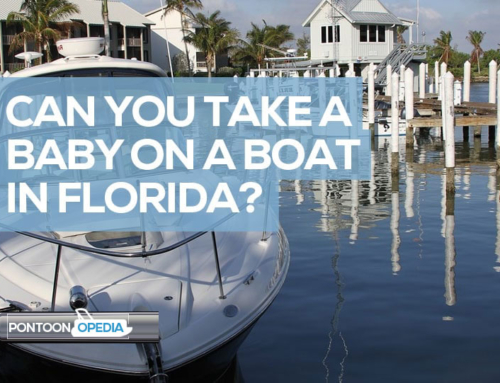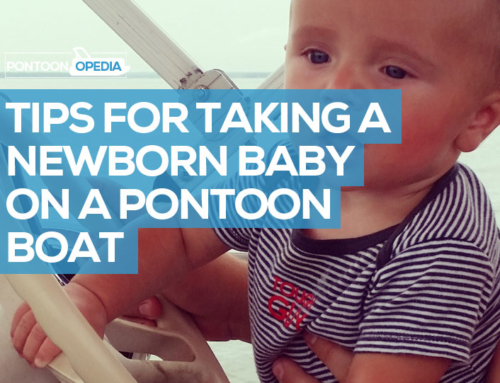Last week my wife and I delved into the website statistics for Pontoonopedia a little and saw just how many visitors to the website we were now getting from Canada. It was surprising the amount of Canadian people who do visit us, as previously we thought it was just those in the United States.
We didn’t want to leave you guys out, as understand that the marine and boating laws across the border can be very different. So we decided to do some research into when you can take a baby on a boat in Canada, and here’s what we found.
Newborns and Babies can go on boats in Canada at any age, and there is now law against it. However, there are no Canadian Coast Guard approved life jackets that will fit a baby weighing less than 20 pounds.
So, what can we assume here?
Well it firstly worth noting that there is no Canadian law that states it’s a legal requirement to wear a life jacket. However, there is a law that states every boat should have a properly fitting life jacket for everyone on board, and that includes babies, infants, and toddlers.
But you don’t have to wear one if you don’t want to.
Does that mean babies and children don’t have to?
Of course not, and you would be crazy not to have them wearing one at all times.
Children Should Always Wear a Life Jacket
However, despite there being no Canadian Coast Guard approved life jackets for newborns and younger babies, you can buy life jackets for infants between 8 and 25 pounds that have been US Coast Guard approved instead – here’s a recommendation on Amazon.
If you do buy one, and then take your baby on a boat in Canada you won’t be breaking any laws as far as we know.
You will also have the peace of mind in knowing that your baby is wearing a safe life jacket, albeit one approved in the US only.
Alternatively, you can wait until your baby is older and heavier, and then buy a Canadian Coast Guard approved life jacket where approval standards start from 20 pounds and up.
Did You Know: 9 out of 10 of drowning fatalities relating to boat accidents occur when people did not wear a life jacket. Be safe and buy them for your child now!
Let’s be honest though, in the real-world, people take babies on boats in Canada all of the time.
But the recommendations commonly found on Canadian websites tend to state that babies should not travel on boats if they are under 20 pounds in weight.
The key term here is “travel”, and as you know our website is very much focussed on leisure boating only, and not travelling long distances or living on boats.
If you ask us, we personally would be comfortable taking any age baby on a boat in Canada, as long as we have the correct safety measures and suitable life jackets that fit the baby for a short boat trip.
What’s the Best Life Jacket for a Baby?
You can browse through a large selection of suitable personal flotation devices (PFDs) and life jackets elsewhere on the Pontoonopedia website (view them all here), but there are some things you need to know.
- If should fit perfectly.
- It should have padding around the neck.
- It should support their head.
- It should have a buckle strap between their legs.
- It should be pulled and strapped nice and snug.
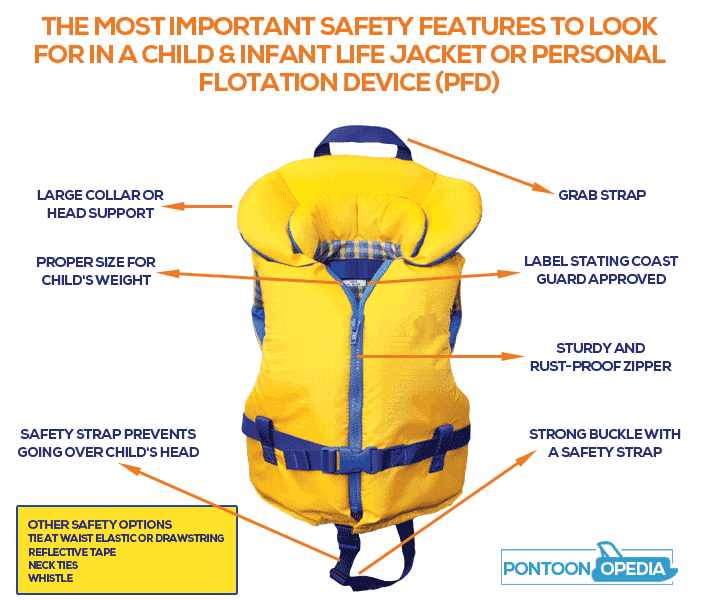
These are the most important features you should look for in a baby or child life jacket or PFD.
When Should Your Baby or Child Wear a Life Jacket?
This safety advice is applicable no matter where you boat, so take note of them whether you are based in the United States, United Kingdom, Canada, or anywhere else in the world.
Kids can accidentally fall into water at any time, and you might not even hear it happening before it’s too late.
That’s why it’s so important that they have a properly fitted life jacket that is age appropriate. If it’s too big then they might slide out of it when they hit the water so pay very close attention to how much your child weighs so you buy the right fit, plus upgrade as they grow older.
Obviously, the life jacket should always be worn if they are on an open deck, or out in the open on any type of boat.
Children should also wear life jackets when having fun in the water up to ages of 5, even if they are competent swimmers.
Never assume that the place or boat you are visiting is going to have a life jacket available that will fit your child.
We always recommend that the parent or guardian is in full control of life jacket duties, so get one that fits, and take it with you at all times.
When Can a Toddler Go on a Boat in Canada?
Please refer to our previous notes further up the page where we found that that the Canada Coast Guard or Transport Canada approved life jackets start from 20 pounds in weight and up.
Again, there is no law at what ages you can take a toddler on a boat from in Canada, but they must be in a properly fitted life jacket for their age in order to be safe.
Be Safe and Exercise Common Sense
Drowning is the second most common cause of fatalities in children.
But that doesn’t mean you have to completely disregard how much fun you can have when your taking babies or young children out on your boat on the Canadian lakes and rivers.
As long as you exercise common sense, follow the legal and safety guidelines, plus are properly kitted out with all the safety equipment and life jackets you need for safe boat trip, then there’s no reason why you shouldn’t take your baby on a boat in Canada.
Boat Captains Should Carry Proof of Competency
If you are going on a leisure boat trip in Canada, make sure that the person operating the boat has a valid proof of competency.
The proof of competency required by any company offering boat trips in Canada can be one of three things.
They will either be required by law to carry a Pleasure Craft Operator Card, an approved marine certificate, or a Canadian boat safety course pass issued before April 1999.
In addition to proof of competency, the boat operator on the day should be carrying personal identification with them such as a driving license or other valid photo ID.
Safety Advice for Taking Infants on Boats in Canada
If it’s you and your family who are in charge of the boat, then I have no doubt that you are already very aware of safety. But for some quick refreshers, here’s what to take note of.
- Be safe and make sure adults and children wear non-skid shoes.
- Always have properly fitting life jackets for all passengers on board.
- Check the weather before you sail to make sure nothing rough is anticipated.
- Plan the route you will be taking on the lake, river or sea channel.
- Be aware of any hazards on your route including sand bars, tides, and water levels.
- Make safety checks on your boat and equipment before you set-off.
- Don’t drink alcohol whilst operating your boat, particularly with infant passengers.
- Ensure your children and toddlers know basic safety procedures.
That last point is very important.
Our own children have grown up being very aware of the risks involved with boating and sailing.
We’ve tried very hard to almost imprint safety rules on their brain, and with any boat trip we take, it will start with a safety briefing – even if they have heard it 100 times before.
It’s very similar to the way in which flight attendants give us safety information before a plane takes off. Yes, we’ve all heard it before, but it could save lives.
We take the same approach with our kids.
The safety briefing includes aspects such as:
- Lifejackets
- Overboard
- Stopping the Boat
- Fire Extinguishers
- Radio Use
- Attracting Attention
Try to remember the acronym “LOSFRA” which relates to the elements above. It will help you to give you safety briefing each time you take a boat trip.
The most important elements will be with regards to where the safety equipment is located, how to use it in the case of emergency, and also an introduction to using communication equipment if needed.
Recommended Resources
For parents and boaters in Canada we’ve compiled a list of some very useful resources which will help you plan safe boating with your baby, toddler, child, or teenager.
Here’s a selection of the best websites you can visit now.
- Lifesaving Society of Canada – Information on life saving strategies, training programs, and courses as well as organizing Canada’s National Drowning Prevention Week and other important initiatives.
- Canadian Safe Boating Council – They run awareness programs on boating safety and improve communications regarding safe boating issues between government departments and agencies in Canada.
- Transport Canada’s Office of Boating Safety – This government website includes information and guidance including a Safe Boating Guide, information on regulations, safety courses, boat licenses, and much more.
Our Final Word
We hope that you have found this information on when a baby can go on a boat in Canada useful.
Tasha and I have tried to make the information as up to date as possible as at 25thof July 2018.
We will aim to update this page as and when legislation changes, but always recommend that do your own due diligence and checking with government law and guidelines.
Please take a look through the Pontoonopedia website as we’ve previously published loads information about safe boating with kids and babies which is relevant no matter where you live or sail.

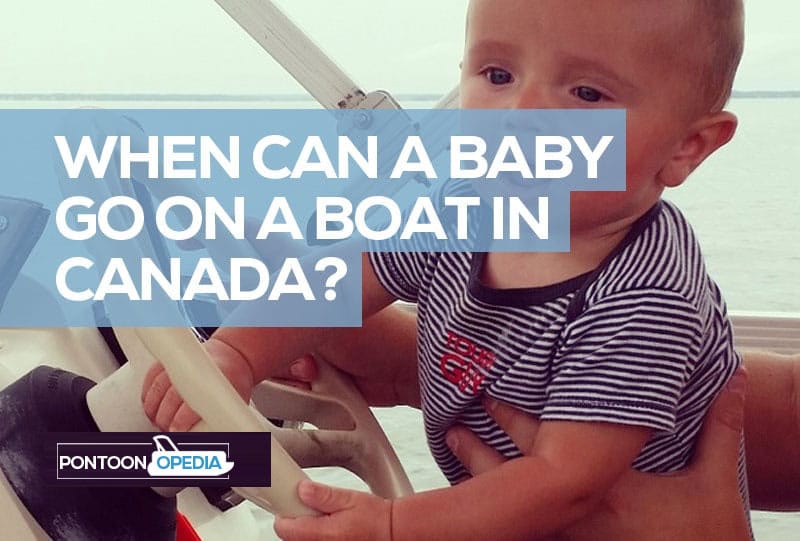
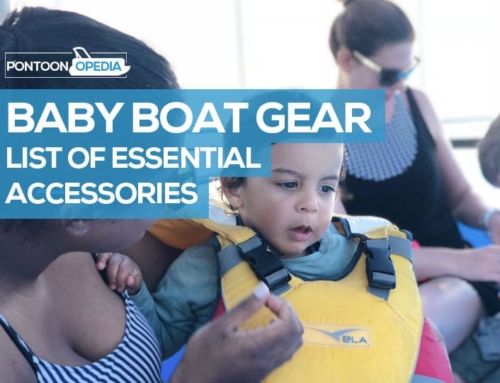
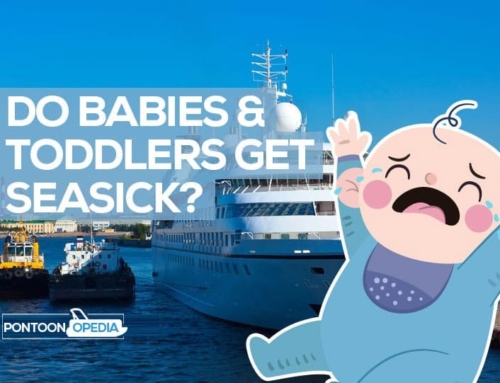
![Do Child and Baby Car Seats Float in Water? [ READ WARNINGS ]](https://pontoonopedia.com/wp-content/uploads/2018/09/car-seats-float-500x383.jpg)
